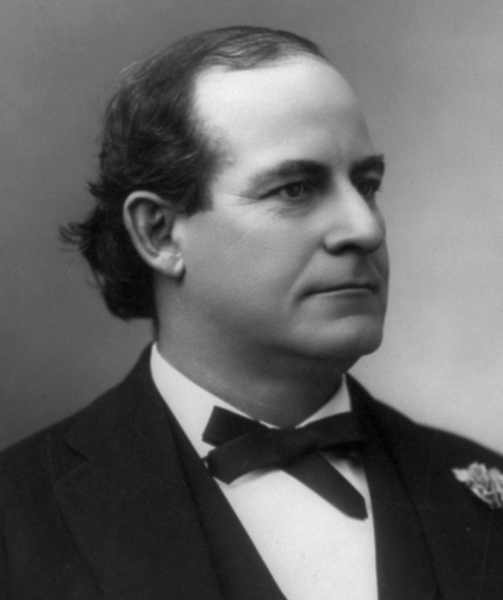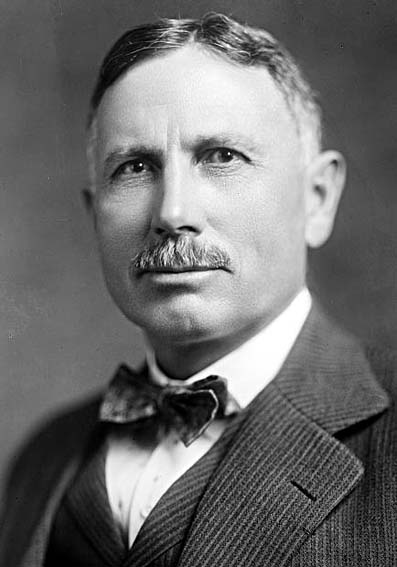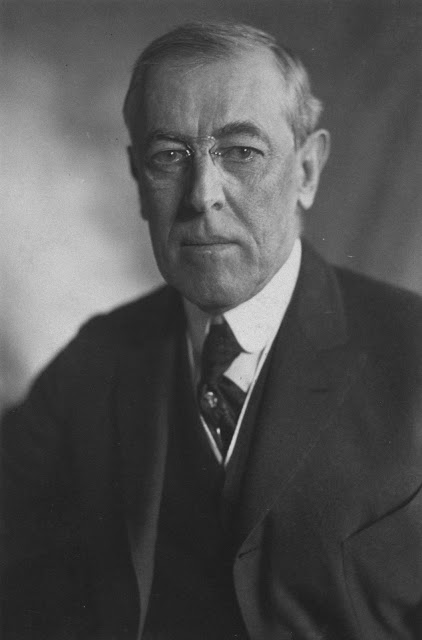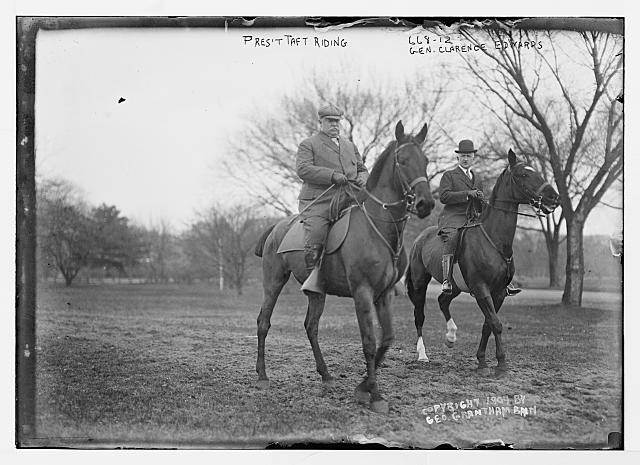Today is the centennial of the 1916 General Election, and of course the eve of the 2016 General Election. We have the advantage of the 1916 one, of course, in that we know how things turned out. Something those voters who went to the polls in 1916 did not, both in the near term, and the short term.
I discussed the 1916 election a bit on our companion blog, Today In Wyoming's History in that blog's November 7th entry. In that entry I noted:
1916 President Woodrow Wilson was re-elected over Charles Evans Hughes, but the race was so close that the results were not known until November 11.Wyoming's electorate gave 55% of the vote to Wilson.As a total aside, I have to say, agree with Montana's Rankin or not, she sure had the courage of her convictions.
1916 John B. Kendrick elected to the Senate from Wyoming.
1916 Republican Jeannette Rankin of Montana became the first woman elected to Congress. She would boldly cast "no" votes on the measures to declare war in World War One and World War Two.
I also addressed the 1916 Election, also on Today In Wyoming's History, on the sidebar addressing Elections and History In Wyoming. In that entry, I noted:
Woodrow Wilson took Wyoming's electoral vote that year (1912), receiving 42% of the popular vote. The combined Taft and Roosevelt vote surpassed that, with Roosevelt taking 27% of the vote, a greater share than that taken by Taft. Socialist Eugene Debs came in with an amazing 6%. Given this, it is not possible to simply write off the election to the split in the Republican Party that year. The combined Debs and Roosevelt vote made up a whopping 33% of the Wyoming electorate that was expressing support for a radical change in direction in national politics. Wilson's 42% was not insignificant either. Even simply writing off the fact that any Democratic candidate of that era would have received at least 1/3d of the state vote, a surprising number of Wyomingites seemed to be espousing the progressive, and even radical, ideas that were the combined platforms of the Progressive and Democratic parties. Even accepting that the Democrats had come at this development through the Populist, which was reflected in their earlier nomination of Bryan, and in Wilson's appointing him to the position of Secretary of State, it seems something was afoot.
Former head of Princeton and Governor of New Jersey, President Woodrow Wilson.
Indeed, in the same year, the sitting Governor, elected in 1910, Joseph M. Carey, left the Republican Party and joined the Progressive Party. Carey, like most (but not all) of the Progressives, including Theodore Roosevelt himself, would eventually return to the Republican Party, but it's at least interesting to note that a sitting, elected, Wyoming Governor publicly abandoned his party to join a third party. A think like that would simply be inconceivable today.Governor Carey just months prior to his defection to the Progressive Party, with a bored looking Dorothy Knight, the daughter of a Wyoming Supreme Court justice, at the launch of the USS Wyoming.
This tread, moreover, continued. Carey's successor in the Governor's office was not a member of the Republican Party, nor a Progressive, but Democrat John B. Kendrick. Kendrick did not remain in that office for long, however, as he was elected to the United States Senate by the electorate, now able to directly elect Senators, in 1916, a position he held until his death in 1933. His companion in the Senate for most of that time, however, was very long serving Republican Senator Francis E. Warren (who of course had also been a Governor) who served until his death in 1929, when he was replaced by Republican Senator Patrick Sullivan.
Senator John B. Kendrick.
A slow shift began to take place in the early teens, however. In the 1916 Presidential election the state again supported Wilson, giving him 49% of the vote. 3% supported Socialist candidate Allan Benson, and those votes would certainly have gone for a any more left wing candidate than the Republican Charles Hughes, but a period in which Wyoming leaned Republican but which would swing towards Democrats was emerging. The state went very strongly for Warren Harding in 1920 (60%) and for Coolidge in 1924. In 1924, however, the Democrats fared very poorly in the Presidential election, with the Progressive Candidate Robert LaFollette, who had taken up where Theodore Roosevelt would not have wanted to leave off for him, and then some, receiving 31% of the Wyoming vote. David, the Democrat, came in a poor third, showing that a strong Progressive streak remained in the Wyoming electorate at that time. That election saw the nation nearly completely go for Coolidge except in the South, which went for Davis. Geographically it was one of the most divided elections in the nation's history.
I'll be posting some newspapers from 1916 that give a flavor of the election that year (and indeed already have) but I thought here I might look at a couple of things a little more in depth. And, as I noted above, there were clearly some long term trends at work that would continue to play out for the next several years. Robert LaFollette taking 31% of the Wyoming vote in 1924? Amazing, in that LaFollette was a real socialist, not a social democrat like this year's Bernie Sanders.
Anyway, let's look at the 1916 election.
Who was voting?
Well, for one thing, in Wyoming, women were voting, as they had since statehood. This wasn't so in all of the United States, however. Oddly, in a large part of the East, together with the South, women did not have the franchise and would not until the 19th Amendment became law in 1920. In western states, however, they largely had the franchise, which would probably not be what many people would guess today. Wyoming's state nickname, The Equality State, stems from it having always had the franchise for women.
Indians, however, could not vote in much of the United States as they were not citizens even in their own land. American Indians would not become uniformly citizens until the Indian Citizenship Act of 1924. That seems simply stunning, but that was the case. The concept of being born within the United States automatically making a person a citizen did not apply to them if the sovereignty of their tribes was still recognized. Indian tribes retain sovereignty today, but all the native born, of any race, are of course regarded as citizens now. I don't know that they didn't have the franchise in Wyoming, but I strongly suspect that they did not as the two tribes that resided in Wyoming, and still do, were part of the western reservation system, which would have made their having had citizenship up until 1924 highly unlikely.
Other minorities, I'd note, did have unrestricted access to the ballot in Wyoming. This went back to the state's early history. Indeed, by 1916 both women and blacks had served on juries in Wyoming, and while that went back in forth in regards to women, it did not as to blacks. Indeed at least one black juror had served on a death penalty case in Wyoming prior to 1916.
As I noted in the long second thread linked in above Wyoming was not a conservative state the way that is now, in 1916. This is something a person must approach with caution as its easy to assume too much of the opposite, and conservative and liberal in the current context isn't something that's easily to uniformly compare with conservative and "liberal" in past eras. Still, some comparison is interesting.
As I first noted in the sidebar mentioned above, a person has to consider that early in the state's history, it was the GOP that was, or could be, liberal, in context, while the Democrats were the opposite. As I noted there:
So, in short, Wyoming was a Republican state early on and as such, it fit into the middle of the road to "progressive in terms of its political leanings. This was very much the case for much of the West. There was a conservative wing of the GOP to be sure, but at that time, it was really the Democratic Party that was uniformly conservative. Republicans in the West, moreover, leaned towards the more liberal wing of the GOP.Other minorities, I'd note, did have unrestricted access to the ballot in Wyoming. This went back to the state's early history. Indeed, by 1916 both women and blacks had served on juries in Wyoming, and while that went back in forth in regards to women, it did not as to blacks. Indeed at least one black juror had served on a death penalty case in Wyoming prior to 1916.
As I noted in the long second thread linked in above Wyoming was not a conservative state the way that is now, in 1916. This is something a person must approach with caution as its easy to assume too much of the opposite, and conservative and liberal in the current context isn't something that's easily to uniformly compare with conservative and "liberal" in past eras. Still, some comparison is interesting.
As I first noted in the sidebar mentioned above, a person has to consider that early in the state's history, it was the GOP that was, or could be, liberal, in context, while the Democrats were the opposite. As I noted there:
Wyoming obtained statehood in 1890. 1890 was still well within the influence of the Civil War, and that continued to have an impact on politics that late, and for about a decade after that. The fortunes of the Republican Party had been somewhat solidified as a result of the war, but that was also true for the Democrats. In a way, what succession had attempted was reflected in the popularity of the political parties. The GOP was very strong in the North, and the Democratic Party dominated the South. States in the Midwest tended to be in a state of flux. In the West, were most of the territory was just that, territory, the GOP was by far the strongest party as a rule.
The GOP of that era, 1860s, had a strong "liberal" element in it, which was particularly reflective of its anti slavery policy of 1860-1865. That part of the party had grown in strength during the war, and by the end of the war Radical Republicans, who favored a harsh Reconstruction designed to immediately address racial issues in the South, were a strong element in the party. They never took control of it, however. The party also was pro business, and was in favor of governmental assistance to business when it seemed merited. The best example of that is probably the Transcontinental Railroad, which was backed by the Federal Government and which was a massive expenditure in various ways. That wasn't the only example, however. The Homestead Act, which gave away Federal Property, which had formerly been held until turned over completely to newly admitted states, created an official policy of bribing emigrants with offers of land from the Federal stock of the same. The Homestead Act was a Republican Act. The Mining Law of 1872, which worked in a similar fashion, likewise was a Republican Act.Republican President U. S. Grant. Two time GOP winner and hero of the Civil War.The Democrats, in contrast, were more of a "conservative" party in some ways, although again the distinction cannot be directly carried into modern times. Democrats tended to favor individual "state rights" more than Republicans did. For that reason Democrats had generally opposed the Union effort during the Civil War, no matter where they lived.
A huge difference between the parties at that time was that the GOP had a legacy of freeing the slaves and the Democrats had effectively been the party of slavery. After the war, for that reason, the Democrats remained extremely strong in the South, where they continued to promote policies that were racist in nature. The GOP drew the support of recently freed slaves, but it was moderate in its attempts to assist them.
Republicans dominated Wyoming's politics at every level right up until the Johnson County War. That event caused a disruption in Republican fortunes, although they soon recovered. Nonetheless it would be a mistake to assume that Wyomingites were unfailingly loyal to the GOP. Indeed, the extent of their progressive leanings was revealed in the next several Presidential elections in which Wyomingites uniformly went to the "left" with their vote. As noted in the thread linked in above:
This would help explain the results of the Presidential election, in Wyoming, of the same year (1892). In that year, pro business, Bourbon Democrat, Grover Cleveland became the only President to regain office after having lost a bid for reelection. Cleveland was a candidate that those leaning Republican could generally support, which explain in part how his political fortunes revived, but he did not gain support in Wyoming. In Wyoming, as we will see in a later entry, the state's electorate voting for representatives to the Electoral College for the first time, given its recent statehood, went for Populist James Weaver.. The general election of 1892 saw four candidates compete for electoral votes. In Wyoming, President Harrison ended up polling just over 50% with Populist James Weaver taking 46% of the Wyoming vote. The remaining percentage of the vote seemingly went to John Bidwell of the Prohibition Party. Cleveland's percentage of the Wyoming vote was infinitesimal.
Populist candidate James B. Weaver in 1892. He took Colorado's electoral vote that year and came close to taking Wyoming'sAs surprising as this is, Wyoming was not unique in these regards. Weaver polled so well in Colorado that he pulled out ahead of Harrison in that state and took that state's electoral votes. He also won in Idaho, Nevada and North Dakota. Cleveland was obviously very unpopular in the Rocky Mountain West in the 1892 election. Indeed, Cleveland only took California and Texas in the West, and polled most strongly in the East and the South. He polled particular well in the Deep South that year, although Weaver also, ironically, did well in the South. Cleveland's status as a Democrat probably carried him in the South.
This probably is an interesting comment on both the evolution of political parties, and the make up of the Wyoming electorate at the time. Wyoming remained a Republican state then as now, but at that time the Republican Party had started to split between "progressive" and "conservative" factions. While their fiscal policies significantly differed in general, the Democratic party had not yet started to have a significant populist branch, but it was already the case that its northern candidates, like Cleveland, were more easily recognizable to northern Republican voters than Southern Democrats were. While Weaver didn't take any Southern state, he did however receive a large number of votes in the deep South, however, reflecting the emergence of Populist thought in the Southern Yeoman class.
All of this is quite remarkable in the modern context. Weaver isn't probably really directly comparable to any modern candidate, but none the less he wouldn't be a candidate that we'd expect to have done well in Wyoming, based upon its modern politics, expect perhaps in the context of his populist appeal. That populist appeal, moreover, would next lead Wyomingites to vote for a candidate which we might, perhaps, compare a bit to Bernie Sanders of our day. Indeed, continuing on:
We next get to a beloved figure, and one that is no surprise that Wyomingites loved and continue to love, even if we forget that he was, by the end of his political life, one of the most radical American politicians to ever have significant support.This pattern repeated itself in the Presidential Election of 1896, in which William Jennings Bryan took Wyoming's vote over that of Civil War veteran William McKinley. Bryan was a radical by all accounts, and his having gained both the Populist and the Democratic nominates reflected that parties swing to Populist thought nationally. But Bryan was also popular in the West, as the Wyoming vote demonstrated. Bryan took a whopping 51% of the Wyoming vote.
 William Jennings Bryan, candidate for the Democrats and Populists, and Congressman from Nebraska. Ultimately, his career would conclude as the misplaced Secretary of State under President Woodrow Wilson.In the same election, the State sent former Governor Osborne to Congress, thereby electing a Democrat to the House of Representatives. Seemingly, this reflected a populist streak of some sort that extended to all Federal candidates in Wyoming that year. They returned a Republican to the Governor's office, however, in 1894, so the trend was hardly universal in the state. And long serving, if generally forgotten, Clarence D. Clark remained in office throughout this period.
William Jennings Bryan, candidate for the Democrats and Populists, and Congressman from Nebraska. Ultimately, his career would conclude as the misplaced Secretary of State under President Woodrow Wilson.In the same election, the State sent former Governor Osborne to Congress, thereby electing a Democrat to the House of Representatives. Seemingly, this reflected a populist streak of some sort that extended to all Federal candidates in Wyoming that year. They returned a Republican to the Governor's office, however, in 1894, so the trend was hardly universal in the state. And long serving, if generally forgotten, Clarence D. Clark remained in office throughout this period.
We pick back up here with the entry noted above and find that in 1916, Wyoming went for a slate of Democrats. With the history provided above, this isn't too surprising.The next Presidential election would see Theodore Roosevelt run for office, and Roosevelt was a very popular President in the West. He was also from the "progressive" branch of the Republican Party, so any Populist elements that were headed towards being Democratic were effectively cut off.
Noted biologist, hunter, outdoorsman, conservationist, rancher, historian, and politician, President Theodore Roosevelt.Republican fortunes gained during the Theodore Roosevelt Administration, and when his hand picked successor, his Vice President William Howard Taft ran in 1908, Wyoming demonstrated that it had lost its fondness for William Jennings Bryan, who ran against him. Taft took 55% of the Wyoming vote. Perhaps reflecting some residual racialism, or perhaps recent immigration from Eastern Europe in some counties, Socialist candidate Eugene Debs amazingly took 4.5% of the vote. Statewide, Wyomingites seemed satisfied with Republican candidates once again.Former Governor of the Philippines and Vice President, and future Chief Justice of the United States Supreme Court, William Howard Taft.Taft had the misfortune of following Roosevelt, who was a great man, but who was still a young man, in relative terms, and who just couldn't avoid politics. Taft basically acted as a reformist candidate, but a somewhat moderate one, and Roosevelt, for his part, was becoming increasingly radical. By the election of 1912, the split in the Republican Party that this represented broke the party apart and after Taft was nominated it actually became two parties, with the Rooseveltians becoming the Progressive Party. The Progressive Party would be a radical party even by today's standards, and it says something about the politics of the time that it mounted a very serious campaign and had nationwide support. At the same time, the Democrats began to tack towards the Progressives themselves and pick up parts of their platform. The transformation of the Democratic Party into a liberal party really began with the Presidential election of 1912, and the party by the end of the election was never again quite what it had been, although the change would continue on for years thereafter.
Or is it? What does this say about the state in 1916?
Well, it was populist, which it still is. It was also "progressive", in the context of what that meant as defined by Roosevelt's Progressive Party. That is radically to the left even now, in some ways. Having said that, much of what the Democratic Party has come to stand for in recent years almost any Wyomingite of 1916 would have found to be bizarre, if not appalling. In the context of the times, it's clear that the population of the state, including the great and powerful of the state, had a concern for the "little man" and tended to favor the political and economic interest of average individuals over business. This, indeed, reflected itself in the state's laws which were generally aimed in that direction. Socially, however, the state was not radical, even though this was an era in which true radicalism was on the rise, and this too expressed itself in the state's laws.
It's often noted here that the purpose of this blog is to explore this particular era, and hence this is what we are doing with this and many other posts. I know, from prior experience, even mentioning this change in Wyoming's political orientation is upsetting to some. But Wyoming's orientation was common throughout the West at this time. It reflects the views of the founding generation of the state, and colors the culture of the time.









No comments:
Post a Comment